Succulents have become increasingly popular in recent years, and it’s no wonder why. These unique plants are known for their ability to store water in their leaves, stems, and roots, making them incredibly resilient and low-maintenance. They come in a wide variety of shapes, sizes, and colors, making them a versatile choice for both indoor and outdoor spaces. However, with so many different types of succulents to choose from, it’s important to understand the characteristics and care requirements of each variety before making a decision.
Understanding the Different Types of Succulents
Succulents are a type of plant that have adapted to survive in arid environments by storing water in their leaves, stems, and roots. They come in many different shapes and sizes, from small rosettes to tall, branching plants. Some common types of succulents include Echeveria, Sedum, Aloe, and Crassula.
Echeveria is one of the most popular types of succulents due to its rosette shape and vibrant colors. They come in a variety of sizes and can be grown both indoors and outdoors. Sedum is another popular choice, known for its trailing stems and small, fleshy leaves. Aloe is a larger succulent with long, pointed leaves that are often used for medicinal purposes. Crassula is a diverse genus that includes many different types of succulents, ranging from small rosettes to tall, branching plants.
Factors to Consider Before Choosing a Succulent
Before choosing a succulent for your space, there are several factors to consider. First, determine whether you want an indoor or outdoor succulent. Indoor succulents typically require less sunlight and can tolerate lower temperatures than outdoor succulents. Consider the space availability in your home or garden as well. Some succulents can grow quite large, so make sure you have enough room for them to thrive.
Lighting conditions are also important to consider. Most succulents require bright, indirect light to thrive, although some can tolerate lower light conditions. Finally, consider the climate in your area. Some succulents are more cold-hardy than others and may not survive in colder climates.
Popular Succulent Varieties for Indoor and Outdoor Spaces
There are many popular varieties of succulents that can be grown both indoors and outdoors. Some popular indoor succulents include Echeveria, Haworthia, and Aloe. These succulents are well-suited for indoor environments due to their ability to tolerate lower light conditions.
For outdoor spaces, popular succulent varieties include Sedum, Sempervivum, and Agave. These succulents are more cold-hardy and can withstand a wider range of temperatures. They also come in a variety of shapes and sizes, making them a versatile choice for outdoor gardens.
Each variety of succulent has its own unique characteristics and care requirements. Echeveria, for example, is known for its rosette shape and vibrant colors. They prefer bright, indirect light and well-draining soil. Haworthia, on the other hand, has a more compact growth habit and can tolerate lower light conditions. Aloe is a larger succulent with long, pointed leaves that require bright light and well-draining soil.
How to Determine the Right Size of Succulent for Your Space
Choosing the right size of succulent for your space is important to ensure that it can thrive and grow properly. If you have limited space, opt for smaller succulents such as Echeveria or Haworthia. These compact varieties can be grown in small pots or even in a terrarium.
If you have more space available, consider larger succulents such as Agave or Aloe. These succulents can grow quite large and make a statement in any garden. However, make sure you have enough room for them to spread out and grow.
When choosing the size of your succulent, also consider the growth habit of the plant. Some succulents, such as Sedum, have trailing stems that can spread out and fill in space. Others, like Echeveria, grow in rosettes and stay more compact.
The Importance of Soil and Pot Selection for Succulent Growth
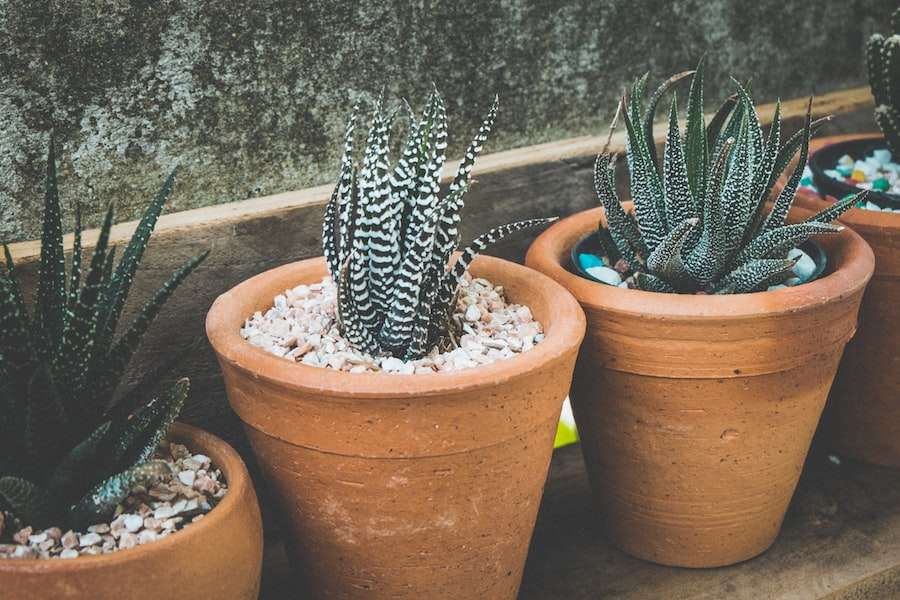
The right soil and pot selection are crucial for the growth and health of your succulents. Succulents require well-draining soil that allows excess water to escape quickly. This helps prevent root rot, which is a common issue with succulents.
When selecting soil for your succulents, look for a mix specifically formulated for cacti and succulents. These mixes are usually made with a combination of sand, perlite, and peat moss to create a well-draining medium.
In addition to the right soil, choosing the right pot is also important. Succulents prefer pots with drainage holes to allow excess water to escape. Terra cotta pots are a popular choice for succulents because they are porous and allow air to circulate around the roots.
Light and Temperature Requirements for Healthy Succulent Growth
Light and temperature are two important factors that can greatly impact the health and growth of your succulents. Most succulents require bright, indirect light to thrive. Place them near a window where they can receive several hours of sunlight each day.
However, be cautious of placing your succulents in direct sunlight, especially during the hottest part of the day. This can cause sunburn and damage the leaves of your plants. If you notice that your succulent’s leaves are turning brown or yellow, it may be getting too much direct sunlight.
In terms of temperature, most succulents prefer warm temperatures between 70-85°F (21-29°C). However, they can tolerate a wide range of temperatures, as long as they are not exposed to extreme cold or heat. If you live in a colder climate, consider bringing your outdoor succulents indoors during the winter months to protect them from frost.
Watering and Fertilizing Succulents: Dos and Don’ts
Proper watering and fertilizing are essential for the health and growth of your succulents. One of the most common mistakes people make with succulents is overwatering. Succulents are adapted to survive in arid environments and can tolerate periods of drought. They prefer to be underwatered rather than overwatered.
When watering your succulents, allow the soil to dry out completely between waterings. Stick your finger into the soil to check for moisture. If it feels dry up to your first knuckle, it’s time to water. Water thoroughly until water drains out of the bottom of the pot, then allow the soil to dry out again before watering.
Fertilizing succulents is not necessary, but can help promote healthy growth and vibrant colors. Use a balanced, water-soluble fertilizer diluted to half strength and apply it once a month during the growing season. Avoid fertilizing during the winter months when succulents are dormant.
Propagating Succulents: Tips for Successful Reproduction
Propagating succulents is a fun and rewarding way to expand your collection. There are several different methods of propagation, including leaf cuttings, stem cuttings, and division.
Leaf cuttings involve removing a leaf from the parent plant and allowing it to callus over before planting it in well-draining soil. Stem cuttings involve cutting a piece of stem with several leaves attached and allowing it to callus over before planting. Division involves separating a clump of succulents into individual plants.
To ensure successful propagation, make sure to use clean, sharp tools to prevent the spread of disease. Allow the cuttings or divisions to callus over for a few days before planting them in well-draining soil. Keep the soil lightly moist until new roots and growth appear.
Common Succulent Pests and Diseases to Watch Out For
While succulents are generally low-maintenance and resilient, they can still be susceptible to pests and diseases. Some common pests that can affect succulents include mealybugs, aphids, and spider mites. These pests can cause damage to the leaves and stems of your plants.
If you notice any signs of pests, such as sticky residue or small insects on your succulents, take action immediately. Remove any affected leaves or stems and treat the plant with an organic insecticidal soap or neem oil.
Succulents can also be prone to fungal diseases such as root rot or powdery mildew. These diseases are often caused by overwatering or poor air circulation. To prevent fungal diseases, make sure to water your succulents properly and provide adequate air circulation around the plants.
Creating Beautiful Succulent Arrangements for Your Home or Garden
Succulent arrangements are a great way to add beauty and interest to your home or garden. There are endless possibilities when it comes to creating succulent arrangements, from small potted arrangements to large outdoor gardens.
When creating a succulent arrangement, consider the colors, textures, and shapes of the succulents you are using. Mix different varieties together for a visually appealing display. You can also incorporate other elements such as rocks, driftwood, or decorative containers to enhance the overall look.
Succulent arrangements can be created in a variety of containers, from traditional pots to unique vessels such as teacups or terrariums. Make sure to choose a container with drainage holes or create a layer of gravel at the bottom to prevent water from pooling.
Succulents are a popular choice for both indoor and outdoor spaces due to their unique characteristics and low-maintenance nature. Understanding the different types of succulents, as well as their care requirements, is important for successful growth and enjoyment of these plants. Consider factors such as space availability, lighting conditions, and climate before choosing a succulent for your space. Pay attention to the size, soil, and pot selection to ensure proper growth. Provide the right light, temperature, watering, and fertilizing conditions for healthy succulent growth. Propagate your succulents to expand your collection and be aware of common pests and diseases. Finally, get creative and create beautiful succulent arrangements to enhance your home or garden. With the right knowledge and care, you can enjoy the beauty of succulents for years to come.
If you’re interested in learning more about succulents and how to care for them, you might also enjoy reading this article on “Surviving the Chill: How to Protect Your Succulents from Extreme Cold – Understanding the Threshold Temperature for Succulent Survival.” This comprehensive guide will provide you with valuable tips and insights on how to keep your succulents healthy and thriving during cold weather conditions. Check it out here.
FAQs
What are succulents?
Succulents are plants that store water in their leaves, stems, and roots. They come in a variety of shapes, sizes, and colors and are known for their ability to thrive in dry and arid conditions.
What are the benefits of having succulents?
Succulents are low-maintenance plants that require minimal watering and care. They can add a pop of color and texture to any indoor or outdoor space and are known for their air-purifying properties.
How do I choose the right succulent?
When choosing a succulent, consider factors such as the amount of sunlight and space available, as well as the level of care required. Some popular succulent varieties include Echeveria, Aloe Vera, and Jade Plant.
How do I care for my succulent?
Succulents require minimal watering and should be placed in well-draining soil and pots with drainage holes. They thrive in bright, indirect sunlight and should be protected from extreme temperatures and frost.
Can succulents be propagated?
Yes, succulents can be propagated through stem or leaf cuttings. Simply cut a healthy stem or leaf from the parent plant and allow it to dry out for a few days before planting in well-draining soil.








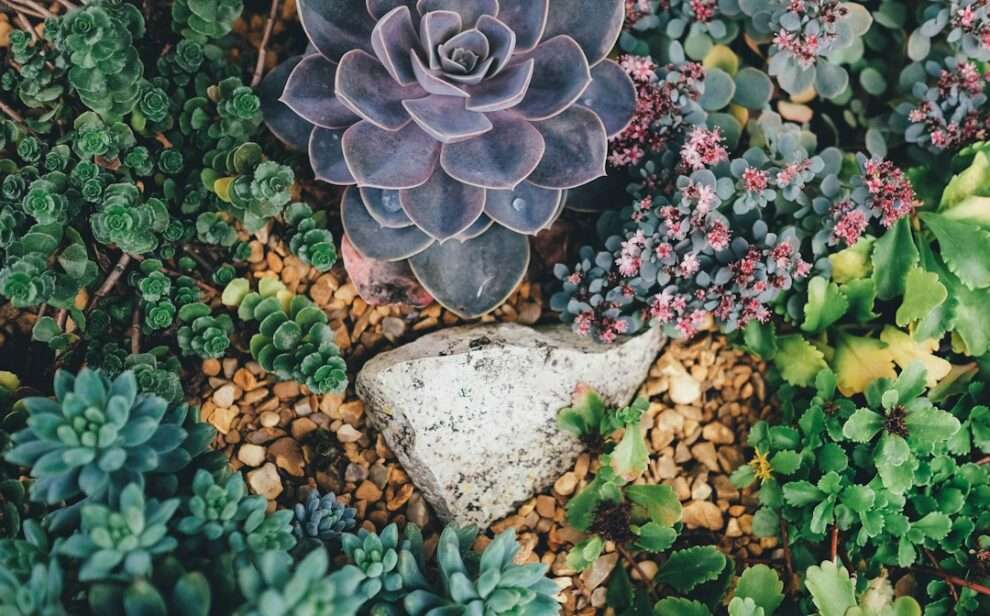
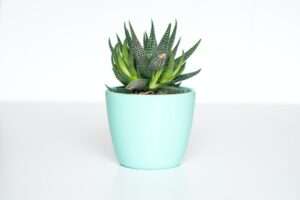
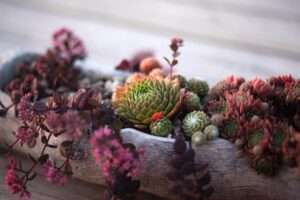





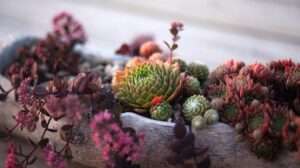
Add Comment